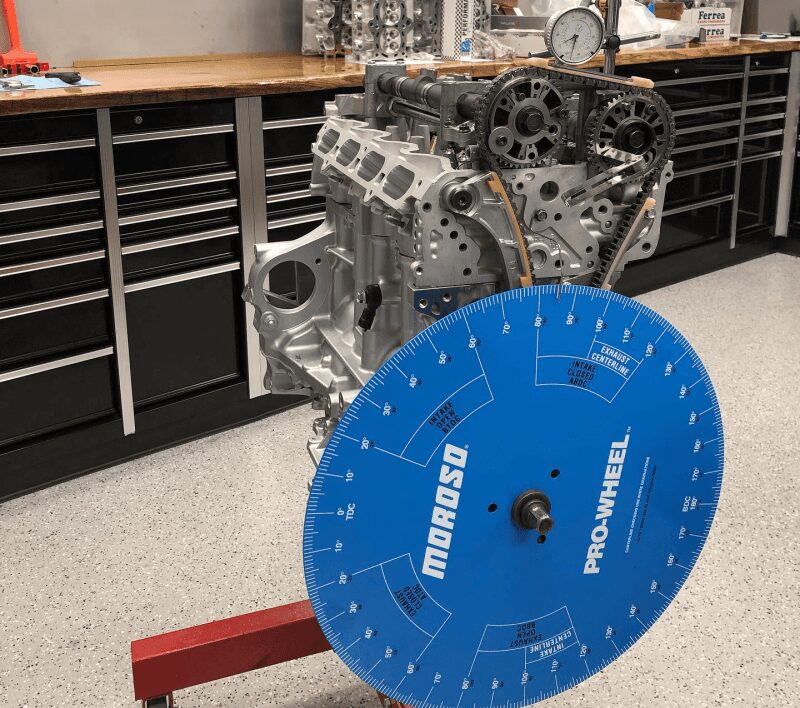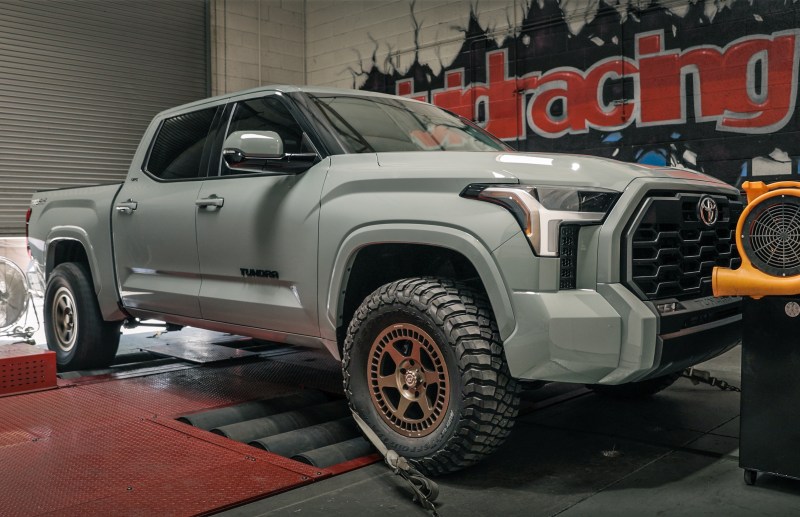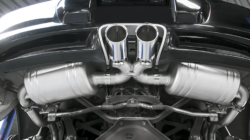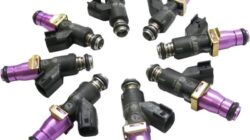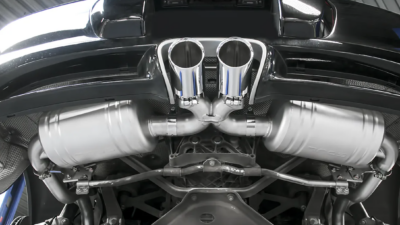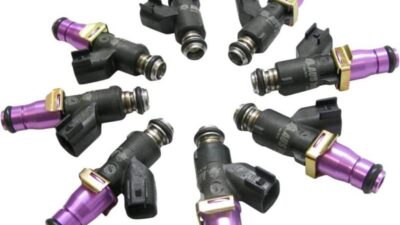Benefits Aftermarket Camshafts – If you’ve ever been sat next to a truck or muscle vehicle at a red light and heard its exhausting, deep idle, you’ve probably heard the impacts of an aftermarket camshaft. The distinctive sound, which is sometimes referred to as a “lope,” is a telltale indicator of enthusiasts who have tuned their engines for maximum performance. This distinctive sound, which is frequently included in innumerable YouTube videos found by searching on phrases like “cam,” “lope,” or “cammed,” is not merely a result of modifications; in the automobile world, it’s a mark of honor. The attraction of aftermarket camshafts has given rise to a whole subculture among enthusiasts who aim to maximize the performance of their cars. However, what precisely is a camshaft, and why are these parts the subject of such excitement?
Table of Contents
ToggleUnderstanding the Camshaft
An internal combustion engine’s camshaft is a fundamental mechanical component. Its principal duty is to regulate the engine’s valve motions, which are essential to the breathing process. The camshaft controls how and when fuel and air enter the combustion chamber and when exhaust gasses are released by opening and shutting the intake and exhaust valves.

The camshaft has lobes, which are protrusions fashioned like a cam that press against the engine’s lifters or valves as the camshaft spins, forcing the valves to open at predetermined intervals. The timing, length, and lift (the degree to which the valves open) of the valve motions are determined by the size, form, and arrangement of these lobes. The engine’s power, efficiency, and emissions are directly impacted by this finely tuned control over the airflow.
Different design configurations, such as Overhead Camshaft (OHC), Single Overhead Camshaft (SOHC), and Dual Overhead Camshaft (DOHC) arrangements, can result from the placement of camshafts within an engine. Every design has advantages and disadvantages that impact the engine’s complexity, performance, and weight. To keep the valve motions in sync with the engine’s functioning, the camshaft is usually controlled by the engine’s crankshaft via a timing belt, chain, or gears.
To put it simply, the camshaft is a major factor in the engine’s performance. Its specs and design are adjusted to meet the unique requirements of various engines, regardless of whether they are intended for regular fuel-efficient driving or high-performance racing.
The Impact of Aftermarket Camshafts
The substantial effect that aftermarket camshafts can have on an engine’s performance is what makes them so fascinating. In order to satisfy the demands of the typical driver, factory-installed camshafts are made with a balance between power, fuel efficiency, and emissions. However, aftermarket camshafts provide a route to improved performance for individuals looking to maximize the performance of their engine.
Greater airflow into and out of the engine is made possible by aftermarket camshafts, which are designed with more aggressive lobe profiles. Higher power production is the result of this enhanced airflow, particularly at higher RPMs when performance is most visible. For enthusiasts, this means having an engine that is more powerful and responsive and that can produce the exhilarating performance that standard camshafts just cannot.

The characteristic idle sound that an aftermarket camshaft makes—often referred to as a “lope”—is one of its most obvious side effects. The aggressive camshaft profile, which makes the engine operate less smoothly at idle speeds, is the source of this lope. For those who want a quiet and comfortable ride, this may be a disadvantage, but for performance aficionados, the lope is a desired feature—an indication that their engine is designed for power.
Turbocharged Engines and Aftermarket Camshafts
An aftermarket camshaft offers even greater advantages in turbocharged engines, as the turbocharger pumps more air into the combustion chamber. Turbo camshafts are made to increase the efficiency of the turbocharger, which improves engine performance. Usually, they have exhaust flow-enhancing profiles, which facilitate a quicker spooling of the turbocharger and the maintenance of boost over a broad RPM range.
These camshafts are made especially to cooperate with the turbocharger, allowing the engine to breathe more efficiently and take full use of forced induction. As a consequence, the engine produces greater power, uses less fuel, and emits fewer emissions—all significant benefits for anybody trying to maximize the performance of their turbocharged system.
The Evolution of Camshaft Technology
Camshaft design has evolved in tandem with advancements in automobile technology. Variable valve timing systems are a modern advancement that optimize performance and economy under varying driving situations by enabling real-time camshaft timing adjustments. Furthermore, there are now camless engines that completely do away with the necessity for a conventional camshaft by controlling valve motions with the use of electric, hydraulic, or pneumatic actuators. These developments demonstrate the continuous advancement of engine technology and promise even higher performance and economy.
Why Enthusiasts Choose Aftermarket Camshafts
The choice to switch to an aftermarket camshaft extends beyond pure power for a lot of car enthusiasts. It’s all about the experience—the way an aftermarket camshaft makes a car feel, sound, and have a distinct personality. The attractiveness of these camshafts is enhanced by their deep, rumbling idle, their power surge at high RPMs, and even their inventive names, such as “Chopacabra” and “Mutha Thumpr.”

Installing an aftermarket camshaft makes a statement rather than merely being a change. It displays a dedication to excellence and a drive to exceed the capabilities of a car. It’s about taking a machine that’s already competent and turning it into something very unique.
Legal and Practical Considerations
It’s crucial to remember that not every aftermarket camshaft is permitted on public roads. Owing to their effects on emissions and noise levels, certain camshafts could only be permitted for use in racing or off-road situations. It is imperative to verify compliance with both local and national legislation prior to the purchase and installation of an aftermarket camshaft.
Furthermore, there are trade-offs associated with using an aftermarket camshaft, despite its obvious advantages. The car may become less suitable for daily driving due to choppy idling and decreased low-end torque caused by the aggressive profiles that improve performance at high RPMs. Furthermore, in order to maintain dependability, the increased strain on the engine components may necessitate more regular maintenance and the usage of higher-quality parts.
The Aftermarket Camshaft Community
A lively and enthusiastic community of enthusiasts, the aftermarket camshaft community shares knowledge, insights, and guidance with one another. For those looking to upgrade their vehicles, this community provides a plethora of information and assistance through social media groups, internet forums, and local car clubs.
To sum up, one of the biggest changes an engine may undergo is the addition of aftermarket camshafts. They may provide noticeable power increases, a distinctive sound, and a personalized driving experience that makes a car stand out from the crowd. Although there are practical factors to take into account, the advantages of an aftermarket camshaft are well worth the cost for individuals who are performance-driven.

